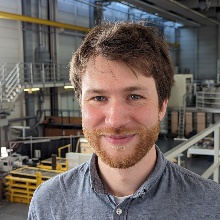Sereni, Laura; Junginger, Tobias; Payraudeau, Sylvain; u. a. (2024): Emissions and transport of urban biocides from facades to topsoil at the district-scale, in:
Science of The Total Environment, Jg. 954, doi:
https://doi.org/10.1016/j.scitotenv.2024.176269.
Abstract
Urban biocides used in facade paints and renders to prevent algae and fungal growth are released into the environment during rainfall, subsequently contaminating groundwater. However, quantitative data on the emission, transport and infiltration of urban biocides at the district scale are generally lacking. In this study, we quantified the fluxes of the urban biocide terbutryn and its major transformation product, terbutryn-sulfoxide, from building facades into stormwater, sediment, soil, and vegetation within a seven-year-old district employing sustainable stormwater management such as infiltration trenches and ponds. Combining four months of field observations with district scale modeling, we estimated initial concentrations of terbutryn in facade paint, quantified the emissions of terbutryn and terbutryn-sulfoxide from facades to soil, and evaluated terbutryn storage in soil under various painting scenarios. Terbutryn concentrations in sustainable stormwater management systems ranging from 2 to 67 ng L−1, frequently exceeding predicted no-effect concentrations. The constant release of terbutryn and its transformation products in runoff highlighted the chronic exposure of non-target organisms to urban biocides. Terbutryn concentrations in topsoil and pond sediment indicated accumulation, while concentrations exceeding 1 μg g−1 in the vegetation suggested plant uptake. Model results revealed that a substantial portion (27 to 73 %) of biocides infiltrated near facades through permeable surfaces like gravel, while a smaller portion (7 to 39 %) reached the stormwater management systems. Additionally, significant biocide leaching in the topsoil (30 cm below the surface) underscored the potential for biocide contamination in groundwater. Overall, this district-scale study and modeling approach provide a comprehensive framework for evaluating scenarios and measures for sustainable stormwater management to mitigate the infiltration of urban biocides into groundwater.BibTeX
Junginger, Tobias; Payraudeau, Sylvain; Imfeld, Gwenaël (2023): Emissions of the Urban Biocide Terbutryn from Facades: The Contribution of Transformation Products, in: Environmental Science & Technology,.
Abstract
Biocides are added to facade paints and renders to prevent algal and fungal growth. The emissions of biocides and their transformation products from building facades during wind-driven rain can contaminate surface waters, soil, and groundwater. Although the emissions of biocide transformation products may be higher than those of the parent biocide, knowledge of the emissions of transformation products over time is scarce. Combining field- and lab-scale experiments, we showed that solar irradiation on facades controls the formation of transformation products and can be used with runoff volume to estimate the long-term emissions of terbutryn transformation products from facades. The slow (t1/2 > 90 d) photodegradation of terbutryn in paint under environmental conditions was associated with insignificant carbon isotope fractionation (Δδ13C < 2 ‰) and caused 20% higher emission of terbutryn-sulfoxide than terbutryn in leachates from facades. This indicated continuous terbutryn diffusion toward the paint surface, which favored terbutryn photodegradation and the concomitant formation of transformation products over time. The emissions of terbutryn transformation products (77 mg m–2) in facade leachates, modeled based on irradiation and facade runoff, were predicted to exceed those of terbutryn (42 mg m–2) by nearly 2-fold after eight years. Overall, this study provides a framework to estimate and account for the long-term emissions of biocide transformation products from building facades to improve the assessment of environmental risks.BibTeX
Linke, Felicia; Edun, O.; Junginger, Tobias; u. a. (2023): Biocides in Soils of Urban Stormwater Infiltration Systems—Indications of Inputs from Point and Non-point Sources, in:
Water, Air, & Soil Pollution, Institut für Wasser- und Umweltsystemmodellierung, Jg. 234, doi:
https://doi.org/10.1007/s11270-023-06613-0.
BibTeX


